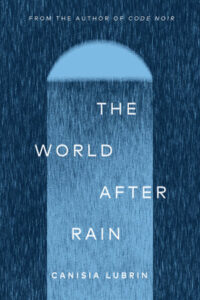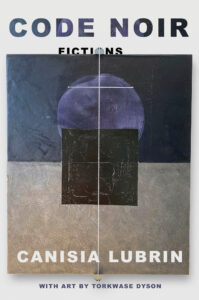Canisia Lubrin
CANISIA LUBRIN’s books include Voodoo Hypothesis and The Dyzgraphxst. Lubrin’s work has been recognized with the Griffin Poetry Prize, OCM Bocas Prize for Caribbean Literature, the OCM Bocas Prize for Poetry, the Derek Walcott Prize, the Writer’s Trust of Canada Rising Stars prize, and others. Also a finalist for the Trillium Award for Poetry and Governor General’s Literary Award, Lubrin has held fellowships at the Banff Centre, Civitella Ranieri in Italy, Simon Fraser University, Literature Colloquium Berlin, Queen’s University, and Victoria College at University of Toronto. She studied at York University and the University of Guelph, where she now coordinates the Creative Writing MFA in the School of English & Theatre Studies. In 2021, Lubrin received a Windham-Campbell prize for poetry, and the Globe & Mail named her Poet of the Year. Born in St. Lucia, Lubrin now lives in Whitby, Ontario, and is poetry editor at McClelland & Stewart.
Books
The World After Rain
Anne's Poem
A Carol Shields Prize winner for her collection of fictions Code Noir, Canisia Lubrin now brings readers a long-form poetic tribute to her mother, praised by Dionne Brand as "incandescent"In this stunning new poem, Canisia Lubrin’s signature epic vision is distilled into a elegy to her mother, along an interwoven and unresolvable axis of astonishment that belongs as much to history as to today. Her lucid attention to what might be the oldest metaphor for grief is drawn from the searing gravity and resonance of the modern poet’s decisive, interior, and inexpressible meditation on love, time, and loss in the excesses of life’s ambitions.
woman from fine-print time, disclose to the world:
the forecast of our noontime births outdoors; how I distrust
every form of authority, chiefly my own astonishment
this poisoned wish is why I love, I bow to deserts,
these claychildren of forests everywhere
I love the rain, this is no secret, I love the solar wind;
hold their elliptical life in the wasteland of our third mouths
where flowers are invisible and bones are sanded and amusing,
and every heliopause cloud senses our head, how we astonish
our memories vining where no shade is enough,
since many who’ll feed me will refuse me their names,
and good, who knows what bargains I would make
with their meanings . . .
Code Noir
Fictions
Winner of the Carol Shields Prize for FictionWinner of the Danuta Gleed Literary Award
“Code Noir is storytelling at its deepest and most intimate. These stories are magic and you must enter them as if you, too, are wondrous.” —Dionne Brand, author of Nomenclature, Theory, and Map to the Door of No Return
Canisia Lubrin's debut fiction is that rare work of art—a brilliant, startlingly original book that combines immense literary and political force. Its structure, deceptively simple, is based on the infamous Code Noir, a set of real historical decrees originally passed in 1685 by King Louis XIV of France defining the conditions of slavery in the French colonial empire. The original code had fifty-nine articles; Code Noir has fifty-nine linked fictions—vivid, unforgettable, multilayered fragments filled with globe-wise characters who desire to live beyond the ruins of the past.
Accompanied by black-and-white drawings—one at the start of each fiction—by acclaimed visual artist Torkwase Dyson, and with a foreword by Christina Sharpe, Code Noir ranges in style from contemporary realism to dystopian literature, from futuristic fantasy to historical fiction. This inventive, shape-shifting braid of narratives exists far beyond the boundaries of an official decree.
20 Jay Street #704
Brooklyn, NY 11201
646.926.0805 | contact@catapult.co






